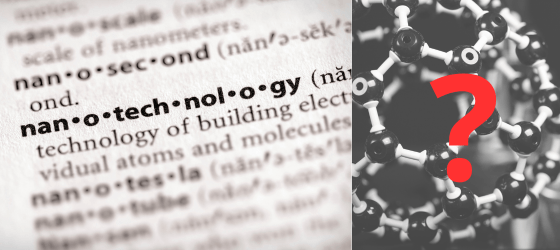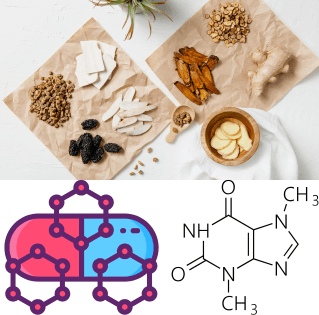.png)
Nanotechnology Could Enhance Traditional Chinese Medicine Delivery: Promising Improved Clinical Outcomes
Published: October 15, 2024
Traditional Chinese Medicine (TCM), with its rich history and holistic approach to healing, has been practised for millennia. While revered for its potential benefits, TCM faces challenges in maximising its therapeutic impact. Traditional methods of delivery, such as decoctions and pills, often result in low bioavailability, meaning the active compounds are not efficiently absorbed by the body. This can lead to slow onset of action and reduced efficacy. However, a cutting-edge field offers a promising solution: nanotechnology. By manipulating materials at the atomic and molecular level, nanotechnology provides innovative tools for enhancing TCM delivery, potentially revolutionising how we experience its healing power and leading to significantly improved clinical outcomes.
Traditional Chinese Medicine (TCM), has been practised for millennia, and provides a holistic approach to health and wellness. TCM encompasses a wide range of practices, including herbal remedies, acupuncture, and dietary therapy, all aimed at restoring balance and harmony within the body.
While highly respected for its potential benefits, TCM faces challenges in maximising its healing impact. Traditional methods of delivery, such as decoctions and pills, often result in low bioavailability, meaning the active substances are not efficiently absorbed by the body. This can lead to a slower start to work and reducing their effectiveness.
This is where nanotechnology comes in. By utilising incredibly small particles, nanotechnology can revolutionise the way TCM is delivered, enhancing its bioavailability, targeting specific areas within the body, and ultimately improving treatment outcomes. This joining together of traditional medicine and innovative scientific methods holds the key to unlocking the full potential of Traditional Chinese Medicine.
Introduction
- Briefly introduce TCM and its growing popularity.
- Highlight the challenges associated with traditional TCM delivery methods (e.g., low bioavailability, slow onset of action).
- Introduce nanotechnology and its potential to overcome these challenges.

What is Nanotechnology?
Nanotechnology operates on an incredibly small scale, working with matter at the level of atoms and molecules. To put it into perspective, a single nanometer is one billionth of a metre; that's about 100,000 times smaller than the width of a human hair!
At this nanoscale, materials show unique properties that are different to their full size counterparts. These properties have an increased surface area that make them useful for creating unique materials and improving existing ones.
In medicine, nanotechnology has emerged as a total game changer, offering innovative solutions for drug delivery, diagnostics, and regenerative medicine. By engineering nanoscale couriers, scientists can improve the solubility, stability, and targeting where they are needed in the body, leading to more effective and personalised treatments.
How Nanotechnology Can Improve TCM Delivery
Nanotechnology offers exciting possibilities for improving the delivery and effectiveness of Traditional Chinese Medicine (TCM). Here's how nanotech can enhance TCM:
- Better Absorption: Many TCM ingredients aren't easily absorbed by the body. Nanotechnology can compact these ingredients in tiny carriers, making it easier for them to enter the bloodstream and reach their target. This means more of the medicine gets used by the body, making it more effective.
- Targeted Delivery: Instead of spreading throughout the entire body, nanotechnology can deliver medicine directly to a specific organ or tissue. This ensures it reaches the exact location where it's needed most. This targeted approach can increase effectiveness and reduce side effects.
- Controlled Release: Some TCM treatments require frequent doses throughout the day. Nanotechnology can create tiny capsules that release medicine slowly over time. This means fewer doses are needed, making treatment more convenient.
- Increased Stability: Some TCM ingredients are delicate and can break down easily, losing their effectiveness. Nanotechnology can protect these ingredients, keeping them stable for longer and ensuring they remain potent.
By overcoming these challenges, nanotechnology can significantly enhance the healing potential of TCM.
Types of Nanocarriers Used in TCM Delivery
Nanotechnology uses a variety of extremely small carriers, each with unique properties, to deliver TCM ingredients effectively. Here are some of the most common types:
- Liposomes
Imagine these as tiny bubbles made of the same material as our cell membranes. They can encapsulate both water soluble and fat soluble TCM ingredients, making them versatile carriers. Liposomes can protect the ingredients from deteriorating and deliver them directly to cells.
- Polymeric Nanoparticles
These are tiny particles made from biodegradable polymers, which are long chains of molecules. They can be designed to carry a variety of TCM ingredients and release them in a controlled way; like tiny time release capsules.
- Micelles
These are tiny spheres that form when certain molecules are mixed with water. They have a unique structure that allows them to encapsulate poorly water soluble TCM ingredients, improving their solubility and delivery.
- Inorganic Nanoparticles
These include nanoparticles made from materials like gold or silica. They offer unique advantages such as high stability and the ability to be easily modified for targeted delivery. For example, gold nanoparticles can be designed to absorb light and generate heat, which can be used to destroy cancer cells.
These are just a few examples of the diverse range of nanocarriers used in TCM delivery. Scientists are constantly developing new and improved nanocarriers to further enhance the medicinal benefits of TCM.

Examples of Nanotechnology Applications in TCM
Nanotechnology is already being applied in exciting ways to improve TCM therapies. For example, researchers have developed nanoparticles that can deliver curcumin, a potent anti inflammatory compound found in turmeric, directly to joints to treat arthritis. This targeted approach increases the effectiveness of curcumin while minimising side effects.
In another study, scientists used nanotechnology to improve the delivery of paclitaxel, a chemotherapy drug, combined with traditional Chinese herbal extracts. This combination therapy showed enhanced anti cancer activity and reduced toxicity compared to paclitaxel alone.
Nanotechnology has also been used to improve the delivery of herbal extracts for treating respiratory diseases like asthma. By encapsulating these extracts in nanoparticles, researchers were able to improve their absorption and effectiveness in the lungs. These are just a few examples of how nanotechnology is being used to enhance the delivery and therapeutic benefits of TCM.
As research continues, we can expect to see even more innovative applications of nanotechnology in the field of TCM, leading to improved patient outcomes.
Challenges and Future Directions
While bringing together nanotechnology and TCM holds immense promise, there are still challenges to overcome before its full potential is achieved. One major hurdle is ensuring the safety of nanomaterials. Diligent testing is essential to determine any potential long term effects on human health.
Another challenge lies in regulating the production of nanocarriers for TCM. It's essential to develop consistent and reliable methods to ensure quality control and therapeutic efficacy. Also, combining nanotechnology with TCM requires a deep understanding of both disciplines. Bridging the gap between traditional knowledge and modern scientific approaches requires collaboration between TCM practitioners and nanotechnology experts.
Looking ahead, the future of nanotechnology in TCM is bright. Researchers are exploring innovative approaches like personalised nanomedicine, tailoring treatments to individual patients based on their unique genetic and physiological characteristics. The development of "smart" nanocarriers that can respond to specific stimuli in the body, releasing medication only when and where it's needed, is also a promising area of research.
Overcoming these challenges through continued research and collaboration will enable us to reach a new era of TCM, where ancient medicine is enhanced by cutting edge technology to deliver safer, more effective, and personalised treatments.
Want to learn more about how nanotechnology can enhance your experience with TCM? Call the Health and Healing Wellness Centre today on 07 3186 0587 for a consultation.
References:
The combination of nanotechnology and traditional Chinese medicine (TCM) inspires the modernization of TCM
Nano-based drug delivery systems for active ingredients from traditional Chinese medicine
Nanotechnology could enhance traditional Chinese medicine delivery
Nanodelivery system of traditional Chinese medicine bioactive compounds
Advanced application of nanotechnology in active constituents of TCM
Could nanotechnology assist traditional Chinese medicine (TCM) in photodynamic therapy (PDT)
Research progress on nanotechnology of TCM to enhance the therapeutic effect of osteoarthritis
A Short Commentary of Nanotechnology on TCM
Research progress of nano-delivery systems for the active ingredients from TCM

